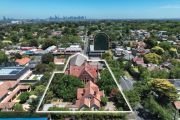
Melbourne's industrial market proving 'incredibly resilient' during coronavirus
Industrial property landlords in Victoria are offering tenants flexibility with their leases, as players in the industrial market adapt to the impacts of the COVID-19 outbreak.
Nathan Bingham, director of property at TM Insight said landlords understood that a bird in the hand was worth more in a rapidly changing environment.
“[Landlords may] allow greater flexibility in their lease terms to secure short-term cashflows to ride out the impact of COVID-19 until normal market conditions return,” he said.
“Before COVID-19, landlords were looking for minimum three-year leases, but are now showing a willingness to look at six-month leases.”
Such short-term industrial space is in particular demand from both retailers and third-party logistics companies, as goods from overseas hit Australian shores with fewer shops open to take them in.
These goods, from a backlog of orders before the coronavirus escalated in Australia, are being carried in thousands of shipping containers from China, where ports and factories are re-opening.
“Many retailers in the discretionary spending field will be faced with the dilemma of where to store these products at a time when their sales are decreasing, and existing warehousing space is at
capacity,” Mr Bingham said.
“This could lead to a huge demand for short-term warehousing over the next six months, particularly in Victoria which is a hub for national distribution activity.”
And as online retail ramps up during the lockdown period, third-party logistics companies with capacity may also look to secure more short-term industrial space to accommodate demand.
Mr Bingham noted that it was too early to conclude how rents would be affected by the pandemic and any impacts would depend on how long the crisis lasted.
A survey among property professionals conducted by the Royal Institution of Chartered Surveyors showed the market estimates that prime-grade industrial property rents in Melbourne to fall by 1.5 per cent in the next 12 months.
Sean Ellison, Asia Pacific senior economist at RICS, said industrial property, especially prime-grade assets, in Melbourne was showing to be “incredibly resilient” at this point, given the state of the economy.
“In the global financial crisis, industrial was hit very hard, it saw a particularly sharp drop and now industrial is now proving to be a little bit more resilient at these early stages,” he said.
Josh Phegan, divisional director at m3property, agreed that the coronavirus outbreak may trigger a short-term demand influx for some industrial property occupiers, including producers of essential goods and logistics providers.
But at the same time, the crisis has caused leasing demand to soften across the wider industrial market. He pointed out that this will continue “until normal cashflow returns to these industries and as supply chains and employment bases restore”.
Occupiers most likely to be affected include those impacted by disrupted international supply chains and businesses that provide goods and services to events.
Industrial property players are already adapting to deal with the new challenges.
“Some tenants are already experiencing cash flow distress and landlords have been proactive in providing short-term rental concessions to assist tenants, typically to be paid back on an interest-free basis after 12 months,” Mr Phegan said.
This is likely to have an impact on rental movements, which is expected to stagnate for 12 to 18 months due to the pandemic, he said.
“The market is in a wait-and-see phase and is poised to become active again once the ambiguity of the current market passes.”
Industrial rents have generally been lagging behind capital values in Melbourne. Net face rents in the west precinct increased marginally by 3.3 per cent in the year to December 2019, while the south-east and east regions saw growth of 1.6 per cent and 1.5 per cent respectively.
Yet average land values across Melbourne, excluding the city fringe, for one to two-hectare lots surged by 21 per cent to $350 a square metre in the same period.
For tenants seeking to be close to the CBD and the Port of Melbourne, there are still options that provide good value. These include inner western suburbs, such as Brooklyn, Tottenham, Sunshine, Sunshine West and Altona, according to Mr Phegan, where rents are below that of prime industrial.
Meanwhile, JLL’s Victorian head of industrial Matt Ellis believes the north-west precinct provides the ideal balance between accessibility and affordability.
“It benefits from the proximity to the CBD, Melbourne Airport, Port of Melbourne and access to major transport linkages,” he said.
Mr Ellis said Melbourne’s industrial property market stood out at the start of 2020, with the city accounting for half of the national take-up in the past 12 months.
Development activity has been strong in Melbourne this year, with 152,600 square metres of industrial space already complete.
A further 727,200 square metres is under construction and due to be completed by the end of the year. More than 80 per cent of this space has already been pre-committed.
Ben Hackworthy, industrial and commercial sales and leasing director at Lemon Baxter, said Melbourne’s city fringe in particular is running out of industrial land, with only some 60,000 square metres remaining.
“The south-east is getting tight, [while] the west and north have the most stock,” he said.
Demand for industrial space would remain strong from medical, food and logistics sectors amid the pandemic, Mr Hackworthy said.










